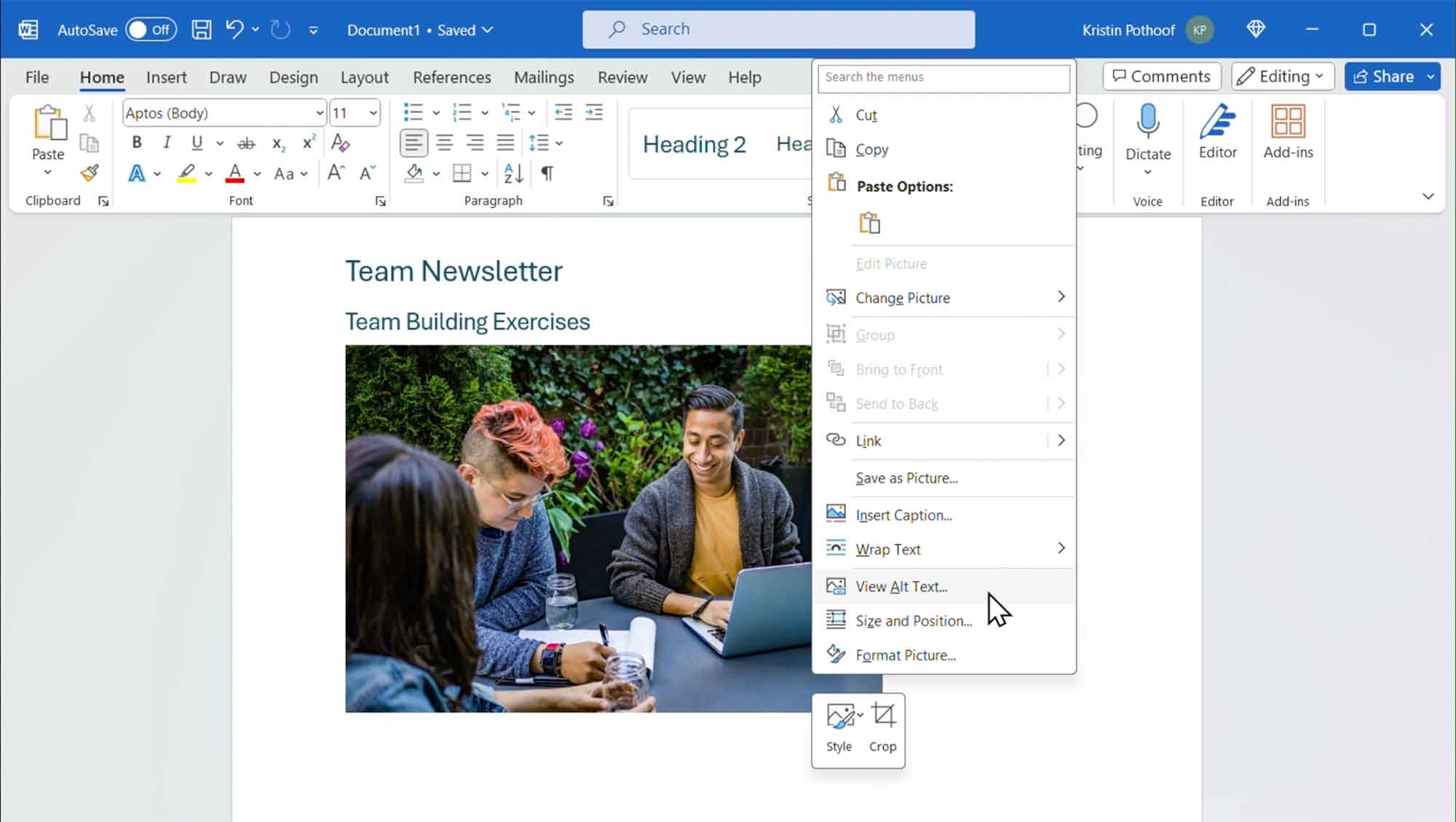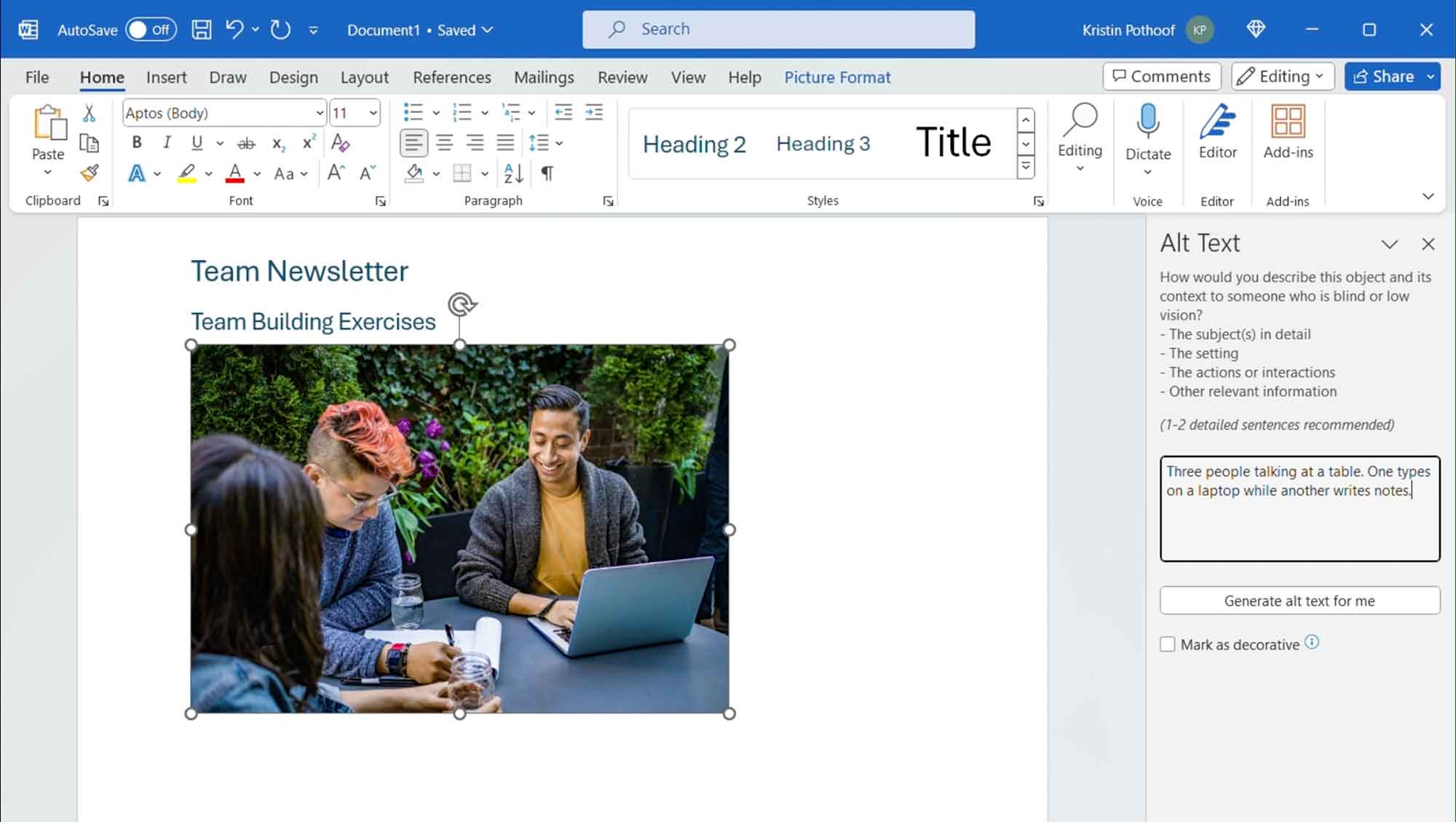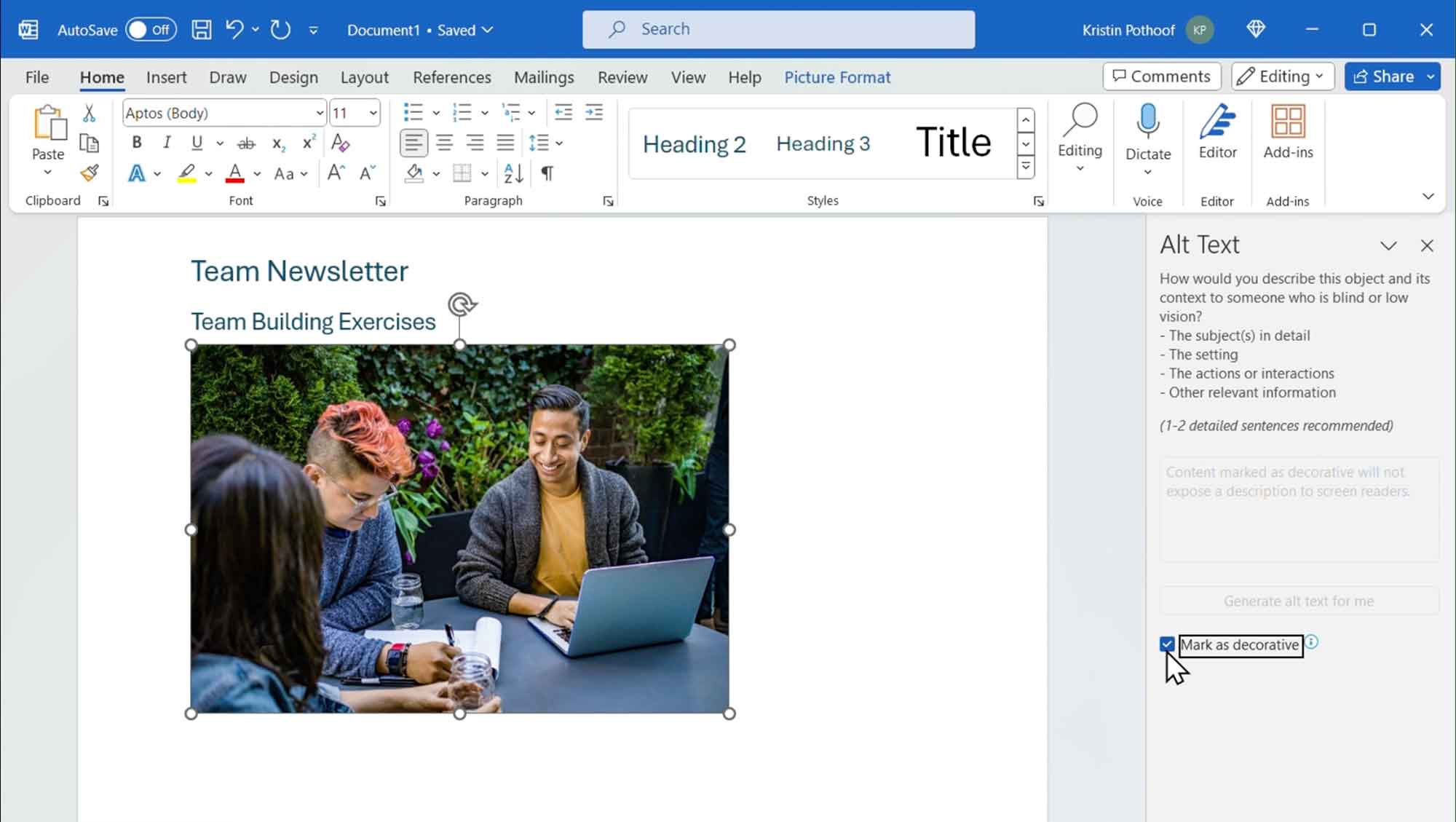Do you know some people rely only on a meaningful description of an image to understand the information contained in the image?
Alternative text, also known as alt text, is descriptive text that conveys the meaning of an image in digital content. It’s designed to make visual content accessible to people with vision disabilities. While there are other benefits of alt text for all users, this Accessibility Bytes focuses on people who use screen readers.
When a person uses a screen reader, the screen reader will read the onscreen text aloud using text-to-speech technology. When the screen reader reaches an image, it will announce that it has detected an image and read the alt text for that image so the user can know what the image is meant to convey.
Without alt text, people who use screen readers cannot access the information provided in the images. This is why alt text is a requirement in the Section 508 standards for creating digital content.
Different authoring tools will have different ways of adding alt text. For example, to add alt text to an image in Microsoft Word, open the contextual menu (right-click) on the image, select “View Alt Text” (Figure 1), then enter text that appropriately describes the image and communicates its purpose (Figure 2).


When writing alt text, follow these guidelines to ensure the text is as helpful and meaningful as possible.
If an image is only decorative and does not convey meaningful information, set the alt text as decorative so that screen readers recognize that the image does not need to be announced and can be skipped. In Microsoft Word, you can do this by viewing the alt text and checking the box that says, “Mark as decorative” (Figure 3). Any program you use should also have its own specific guidance on how to do this.


Keep your descriptions short and focused on the purpose of the image. Avoid repeating information that is already in the main text, and don’t use unnecessary phrases, like “this is a photo of…” or descriptions of irrelevant details in the image. For example, if your image is designed to show how a ramp helps wheelchair users, you do not need to include an in-depth description of the wheelchair user’s clothes or physical appearance in your alt text.
For more guidance on alt text and accessibility, visit the resources for content creators.
Reviewed/Updated: September 2024


